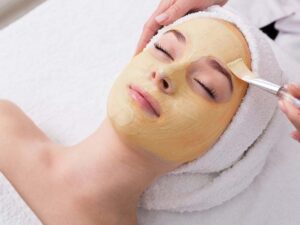Hardwood floors are known for their durability, elegance, and timeless appeal. One of the best features of hardwood flooring is its ability to be sanded and refinished, which can help restore its beauty and extend its lifespan. But can hardwood floors be sanded and refinished multiple times? This question is common among homeowners, particularly in areas like Brooklyn, where older homes with hardwood floors are prevalent. In this post, we’ll explore how often hardwood floors can be refinished, the factors that influence this, and how to maximize the lifespan of your hardwood floors.
The Process of Sanding and Refinishing Hardwood Floors
Before we dive into how many times hardwood floors can be refinished, let’s quickly look at what the sanding and refinishing process entails.
Sanding: This process involves using a machine to remove the top layer of the hardwood, which may have been damaged by scratches, stains, or general wear and tear. Sanding restores the wood’s surface, making it smooth again.
Refinishing: After sanding, a fresh coat of finish—typically polyurethane, varnish, or oil—is applied to the wood. The finish enhances the wood’s natural grain and protects it from future damage. The type of finish used will also impact the durability and look of the floors over time.
Can Hardwood Floors Be Sanded and Refinished Multiple Times?
The short answer is yes, hardwood floors can be sanded and refinished multiple times, but how many times depends on several factors.
1. Thickness of the Hardwood
The number of times you can sand and refinish hardwood flooring largely depends on the thickness of the planks. Most traditional solid hardwood floors are about 3/4 inch thick, which allows for several refinishing attempts over the years. When you sand a hardwood floor, you remove a small amount of wood each time. If the floor has a significant thickness, there is enough wood to sand it down multiple times.
Tip: If you are considering hardwood flooring in Brooklyn, inquire about the thickness of the wood when selecting your flooring. Thicker planks provide more opportunities for refinishing.
2. Type of Hardwood
Different types of hardwood have different wear tolerances. For example, oak and maple are hardwoods that typically handle sanding and refinishing well, while softer woods like pine might not hold up as well after several rounds of sanding.
Solution: If you’re installing hardwood flooring in Brooklyn or any area prone to high foot traffic, selecting a denser hardwood, like oak or hickory, will provide more durability and more opportunities for refinishing.
3. Previous Sanding and Refinishing
If your floors have already been refinished several times, there’s less wood left to sand. This could lead to potential issues down the road, such as thinning the wood or damaging the floor. Most solid hardwood floors can typically be refinished 3 to 4 times during their lifetime, but after that, the amount of wood left to sand may be minimal, and refinishing becomes impractical.
4. The Condition of the Floor
The condition of your floor also affects how often you can sand and refinish it. If your floor is severely damaged, has deep gouges, or is splintering, sanding might not be able to restore it to its former beauty. Refinishing can help eliminate scratches and surface-level damage, but extensive issues with the wood may require replacement.
Recommendation: Regularly inspect the condition of your floors, especially in Brooklyn, where older homes with original hardwood floors may show signs of wear.
5. Type of Finish Used
The type of finish used can also impact how often the floor can be refinished. Oil-based finishes, for instance, are more durable and harder to remove than water-based finishes, so they may require more sanding to refinish. Polyurethane finishes tend to be the most common and can be reapplied multiple times without significant issue.
How to Maximize the Life of Your Hardwood Floors Between Refinishes
While sanding and refinishing can help restore the beauty of your hardwood floors, it’s always best to take steps to protect them in between refinishing jobs. Here are a few tips to keep your floors looking their best:
1. Use Area Rugs and Mats
Placing rugs and mats in high-traffic areas will protect your floors from wear and tear. This is especially important in areas like entryways, hallways, and kitchens.
2. Clean Regularly
Sweeping and mopping your hardwood floors regularly can prevent dirt and debris from causing scratches. Use a gentle cleaner that’s specifically designed for hardwood flooring to avoid damaging the finish.
3. Avoid Excessive Moisture
Water is one of the biggest enemies of hardwood floors. While refinishing protects the wood’s surface, too much moisture can still cause warping, especially if spills are not cleaned up promptly.
4. Maintain Consistent Temperature and Humidity
Wood expands and contracts with temperature and humidity fluctuations. Maintaining a consistent environment in your home—especially in places like Brooklyn, where weather conditions can be unpredictable—can help preserve the integrity of the hardwood.
5. Use Furniture Pads
Place felt pads under the legs of furniture to prevent scratches when moving or repositioning furniture. This will keep the finish intact longer.
Signs That It’s Time to Refinish Your Hardwood Floors
Knowing when to refinish your hardwood floors is essential to prolonging their life. Here are some signs that it may be time to consider refinishing:
- Dull Appearance: Over time, even the most well-maintained floors can begin to look dull, especially in high-traffic areas.
- Scratches and Scuffs: While minor surface scratches can be buffed out, deeper gouges and scuffs may require a complete refinishing.
- Water Damage: If you notice water stains or other signs of damage, refinishing can help restore the floor’s appearance and protect it from further harm.
- Visible Wear Patterns: If the finish has worn off in certain spots, refinishing can restore uniformity to the surface.
Conclusion
In summary, hardwood floors can be sanded and refinished multiple times, but how many times depends on the type of wood, the thickness of the floor, the condition of the floor, and the type of finish used. Regular maintenance, such as cleaning and using area rugs, can extend the time between refinishing jobs. If you’re considering installing hardwood flooring in Brooklyn, be sure to choose a high-quality, durable hardwood and talk to a professional installer who can guide you in the right direction for long-lasting results.
With proper care and the right refinishing, your hardwood floors can look beautiful for decades. If you’re unsure about the condition of your floors or how many times they can be refinished, consult a professional flooring expert who can assess the situation and provide guidance on the best course of action.


